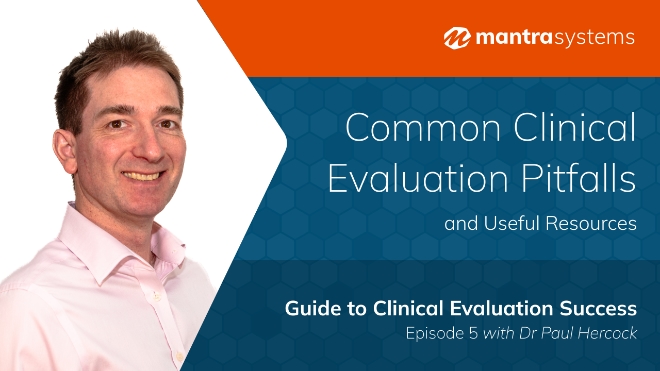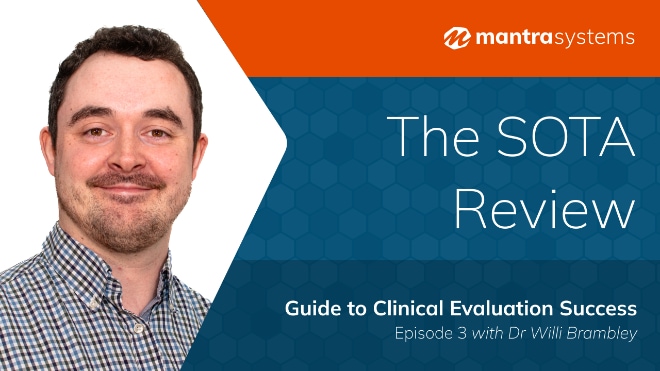
Medical device manufacturers rarely limit themselves to a single market, with global expansion a key part of a long-term growth strategy. For U.S.-based companies, the European Union represents a particularly attractive opportunity. However, navigating the transition from FDA approval to EU market access is not as straightforward as it may seem.
While FDA pathways such as 510(k), PMA, and De Novo are designed to demonstrate a device’s safety and effectiveness in the U.S., EU MDR compliance focuses on conformity with Regulation (EU) 2017/745, and requires that a device be CE-marked before entering the EU market.
Even if a device has already secured FDA clearance, it may still require additional clinical data, updated technical documentation, and enhancements to the quality management system (QMS) to meet EU MDR standards. For manufacturers seeking to expand into the EU market, understanding and preparing for these regulatory differences is essential.
Update: We ran a webinar on this subject and you can view the recording here.
EU MDR vs FDA
| FDA | EU MDR | |
|---|---|---|
| Approval Authority | Federal agency in the US | Notified Bodies - European Union |
| Classification |
Risk based classification through classification database Class I (low risk) Class II (medium risk) Class III (High risk) |
Risk based classification through classification rules Class I – Non-sterile or no measuring function (low risk) Class Is/Im – Sterile and a measuring function (low/medium risk) Class IIa (medium risk) Class IIb (medium/high risk) Class III (high risk) |
| Pathways | 510(k), PMA, De Novo |
CE Mark via MDR Self-Certification (Class I) Annex IX (QMS) Annex X (Type examination) Annex XI |
| Clinical Data | Can use predicates (510(k)) | Mandatory; clinical evaluation and post-market observation required |
| Risk Management |
Risk management activities are expected as part of the Quality System Regulation (21 CFR Part 820). While compliance with ISO 14971 is not formally required, manufacturers are expected to conduct risk analysis using methods such as SFMEA, PFMEA, UFMEA, or other appropriate techniques. |
Risk management is mandatory and must be conducted in accordance with ISO 14971, integrated throughout the device lifecycle. |
| QMS Requirement | 21 CFR Part 820 | ISO 13485 mandatory |
| UDI Requirements | FDA UDI | EU-specific UDI |
| Post-Market Surveillance | Less stringent | Mandatory, PMCF required |
General Roadmap
1. Identify EU MDR Classification
- Assess if your FDA-approved classification aligns with the EU MDR. If required, re-classify your device as per EU MDR Annex VIII risk classes (I, IIa, IIb, III).
- Select an appropriate conformity assessment route
2. Perform Gap analysis
- A gap analysis is crucial for ensuring a medical device complies with EU MDR (Regulation (EU) 2017/745). The FDA submission should be reviewed and compared with MDR requirements to identify areas were additional documentation, technical data, clinical data, or testing might be needed.
- This analysis helps determine the necessary steps to achieve CE marking.
3. Engage a notified body
- Unlike FDA, where the approval comes from a US federal agency, EU MDR requires certification from an EU Notified Body (NB).
- Select a notified body that can certify your device.1
- If the device is classified as medium- high-risk (Class IIa, IIb, or III), early collaboration with a Notified Body is essential to ensure alignment of your regulatory strategy with EU MDR requirements.
4. Implement EU quality management system
- MDR mandates ISO 13485:2016 certification.
- Align QMS with Annex IX, X, XI for conformity assessment and ensure risk management, and UDI traceability.
5. Conduct clinical evaluation and risk management
- EU MDR Clinical Evaluation requirements differ significantly from the FDA approach, requiring expertise in clinical affairs to compile key documents such as the Clinical Evaluation Plan (CEP), State of the Art (SOTA) Report, and Clinical Evaluation Report (CER) for regulatory compliance.
- ISO 14971 based risk management system is required under MDR.
6. Align with EU-MDR Full Technical File Requirements
- Compile technical documentation in line with Annex II & III of MDR, including:
- Device Description and specification
- Information supplied by the manufacturer
- Risk Management File
- General safety and performance (GSPR) checklist
- Standards and common specifications
- Design and Manufacturing information
- Post-market surveillance (PMS) plan
- Post-market clinical follow-up (PMCF) plan
7. Develop a Robust Post-Market Surveillance (PMS) Strategy
- EU MDR places significant emphasis on post-market surveillance to ensure ongoing safety and performance.
- Key components include:
- Periodic Safety Update Reports (PSURs):
Required for Class IIa, IIb, and III devices. These must summarise findings from PMS and PMCF, identify trends, and include benefit-risk assessments. - PMCF Studies:
Where applicable, conduct post-market clinical follow-up activities to address residual risks or uncertainties not fully resolved in the pre-market phase. - Vigilance Reporting:
MDR enforces shorter and stricter timelines than FDA. Serious incidents must be reported:- Immediately for serious public health threats
- Within 10 days for death or serious deterioration
- Within 15 days for other reportable events
- Periodic Safety Update Reports (PSURs):
- A well-integrated PMS system supports regulatory compliance, product improvement, and patient safety.
8. Submit for notified body review and obtain a CE mark
- Once the Notified Body approves your documentation, issue a Declaration of Conformity (DoC) and affix the CE Mark.
- In the EU, medical devices must be CE-marked to be placed on the market.
9. Register in EUDAMED and maintain compliance
- Submit device & company details in EUDAMED (European Database on Medical Devices) once it’s fully operational.
Looking ahead
Both the FDA and EU MDR frameworks share a common goal, ensuring the safety and effectiveness of medical devices. However, their distinct regulatory philosophies and regional priorities result in significantly different compliance pathways. The EU MDR is particularly rigorous, reflecting Europe’s focus on lifecycle oversight, clinical evidence, and post-market vigilance.
Transitioning from FDA approval to EU MDR compliance is a complex process that requires strategic planning, detailed documentation, and regulatory expertise. Contact us today for a confidential consultation, and let our experts help you streamline the path to CE marking and long-term EU compliance.














